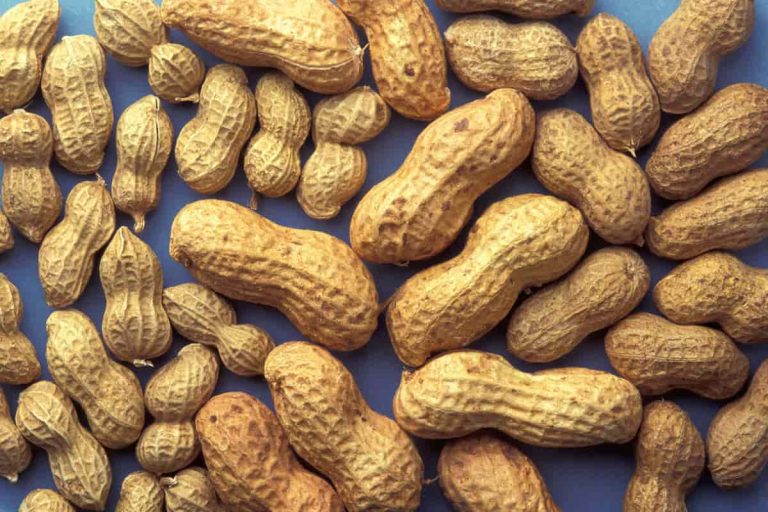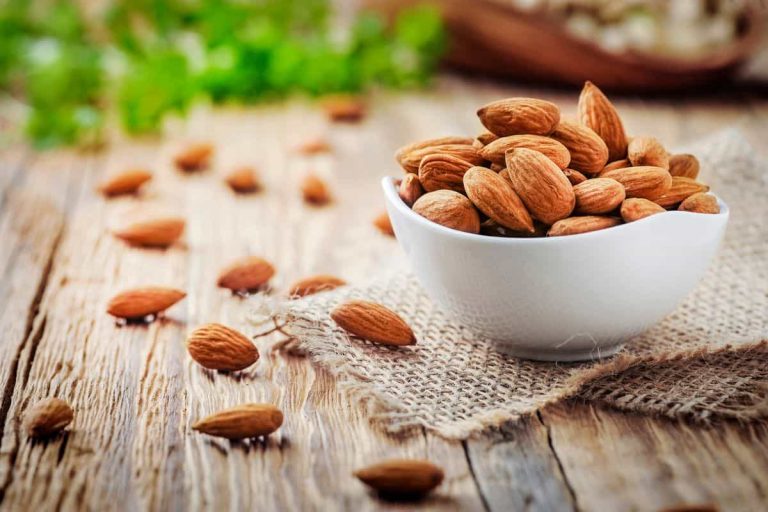Did you know that eating 1.5 ounces of nuts a day can reduce your risk of heart disease? By eating almonds and peanuts that also protect your heart, you can live a long and healthy life.
But there are differences between them for consumers and merchants. Which is better for you, peanuts or almonds? Let’s look around, shall we?
Nutrient Content of Raw Peanuts and Almonds Both almonds and peanuts are equally rich in micronutrients and contain beneficial vitamins and minerals. There are six grams of protein, three grams of fiber and 170 calories in one ounce of dry roasted almonds.
One hundred sixty-six calories, 7 grams of protein, and 2 grams of fiber are all in the same amount as a peanut. Almonds are often a top choice for vitamin E and minerals. However, peanuts contain more B vitamins.
Almonds and peanuts have 15 grams of fat, while peanuts have 14 grams of total fat per ounce, making them both good sources of healthy fats.

These lipids are mainly composed of heart-healthy polyunsaturated fats, lowering cholesterol levels and fighting inflammation to reduce the risk of cardiovascular disease.
To maintain heart health, experts recommend getting 20 to 35 percent of your daily calories from fat, while eating as much unsaturated fat as possible.
Which nut is better, peanuts or almonds?
Vitamins B and E are present in almonds and peanuts, but they are different. If you need to increase your intake of the antioxidant vitamin E, almonds should be eaten more because one ounce contains 45% of the daily value.
However, peanuts are an excellent source of B vitamins, including niacin and folic acid. One serving of peanuts provides you with 10% of the daily intake of folate and approximately 24% of the recommended information for niacin.
There are less of these useful vitamins in almonds. Although both are rich in magnesium, almonds have a slight advantage. Almonds and peanuts have exact amounts of zinc, but almonds have twice the iron and five times the calcium.
So almonds are nutritionally healthier for you than peanuts because they have more iron, calcium, magnesium and good fats. You can talk to a nutritionist to discuss specific issues.

Peanut and almond differences
Each “butter” is made from natural foods such as peanuts and almonds. In addition to similarities, there are also differences that can be considered. Peanuts are botanically classified as a type of plant known as a legume, which puts them in the same plant family as beans and peas. Seed pods are the parts of the plant that grow underground.
Peanuts are thought to have originated in South America, but can now be grown in tropical and subtropical regions around the world.
These regions include parts of Asia, Africa, Spain, and the southern United States. On the other hand, almonds are classified as nuts. It is closely related to other nuts, such as walnuts and cashews, and is a fruit produced by a tree.
It is interesting to know that California is responsible for producing 79% of the world’s almond crop, although almonds are also grown in countries located in the Mediterranean and the Middle East.

Growing almonds requires a significant amount of water, and pollination by bees is essential for their success. Both of these elements raise concerns about the environment’s ability to sustain itself.
On the other hand, peanut needs less water during its growth and its flowers can pollinate themselves. The amount of resources needed to grow almonds is one of the factors that contribute to the high price of almond butter.
Another factor is the strong demand for almonds in all their forms, including whole, in the form of almond butter, almond milk and food products.
There are many similarities between peanut butter and almond butter. Both are known for being excellent sources of protein and fat from plant sources. Both can be used in a variety of culinary applications, from spreading on toast to making curry.
Almond butter, on the other hand, usually costs at least twice as much as peanut butter, but is considered a healthy alternative. Is peanut butter as nutritious as almond butter or is it too expensive for what you get? This article discusses the various uses of each option, the pros and cons to isolate the healthiest of them.

peanut and almond for trade
For nut traders, the difference between peanuts and almonds depends mostly on market demand. But for consumers, their taste and nutritional value are essential. We all know that nuts are very useful for the human body. Here we want to compare these two nuts.
Almonds are high in calories, fat and carbohydrates. On the other hand, peanuts have more protein. Almonds are high in fat and carbohydrates, mainly because they are high in dietary fiber and monounsaturated fat. Almonds also contain calcium, magnesium, phosphorus and vitamins A, E and B2. Almonds have less sodium.
On the other hand, peanuts have more iron, copper and B vitamins than other foods. A lower glycemic index is also found in almonds. In general, peanuts and red skinned almonds are full of good nutrients and good for your health.
As a plant, peanuts and almonds are not nuts. They are called “cooking nuts” because they are used as nuts in the kitchen. Peanuts are the seeds of the legume Arachis hypogaea, which belongs to the Fabaceae family. Peanuts include pistachios, pine nuts, monkey nuts and peanuts.

Almond (Prunus dulcis) is a tree seed of the genus Prunus and family Rosaceae. Under the almond family is the genus Prunus. Almonds are also dark peaches, apricots, plums, cherries and nectarines.
The two beads look different enough that they are easy to tell apart. Peanuts are seeds that are round or oval in shape and grow in long pods with rounded ends. Most often, the pods are light brown or beige and the seeds can be red or dark purple.
Almonds are single seeds in flat, beige pods with small holes. They have a brown skin around a milky white fruit. Almonds and peanuts may taste a little similar. But their taste is more bitter because almonds contain a chemical called amygdalin.
As edible nuts, they are used as such: as part of snacks, desserts and meals. These nuts are used to prepare flour, oil, butter, milk, etc. Almonds are often used to make nougat and are one of the main ingredients of marzipan.

Peanut vs. almond
Today, it is generally accepted that avoiding peanuts is best for your health. Do you also want to prevent the control of blood pressure and diabetes with peanuts? Want to lose weight but miss your favorite peanut butter toast?
Do you believe that walnuts and almonds are all nuts? The decision between shelled almonds versus peanuts, or both, is the one that causes the most misunderstanding or disagreement among nuts. Let’s compare the health benefits of peanuts and almonds to determine whether to eat a handful of almonds or several.










